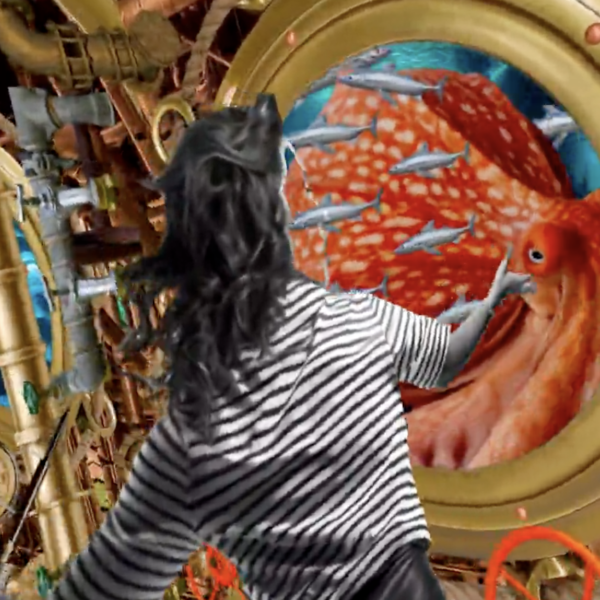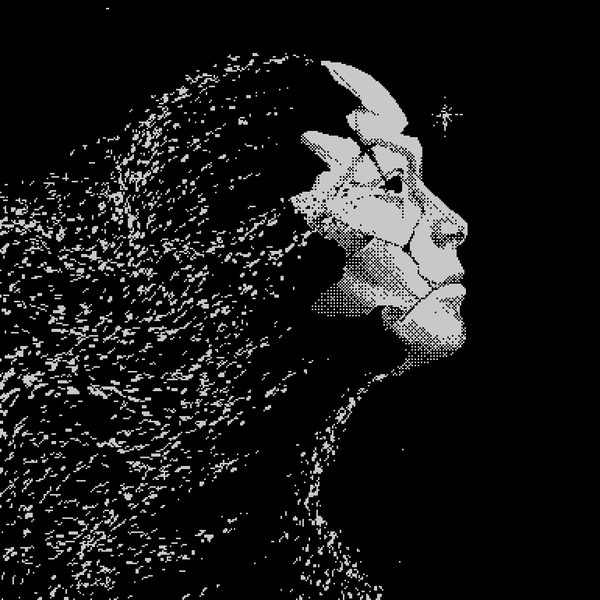Grant Yun on the Interplay of Life, Death and Legacy
Grant Riven Yun’s talents know no bounds: not only is he a wildly talented and successful figure in the digital art community, he is a dancer, a collector, and on his way to becoming a doctor. In this interview, we dive into Yun’s life as an expert multi-hyphenate, how he balances his multiple career paths, and why he wishes for existential crises. Please note, this conversation has been edited for brevity and clarity.
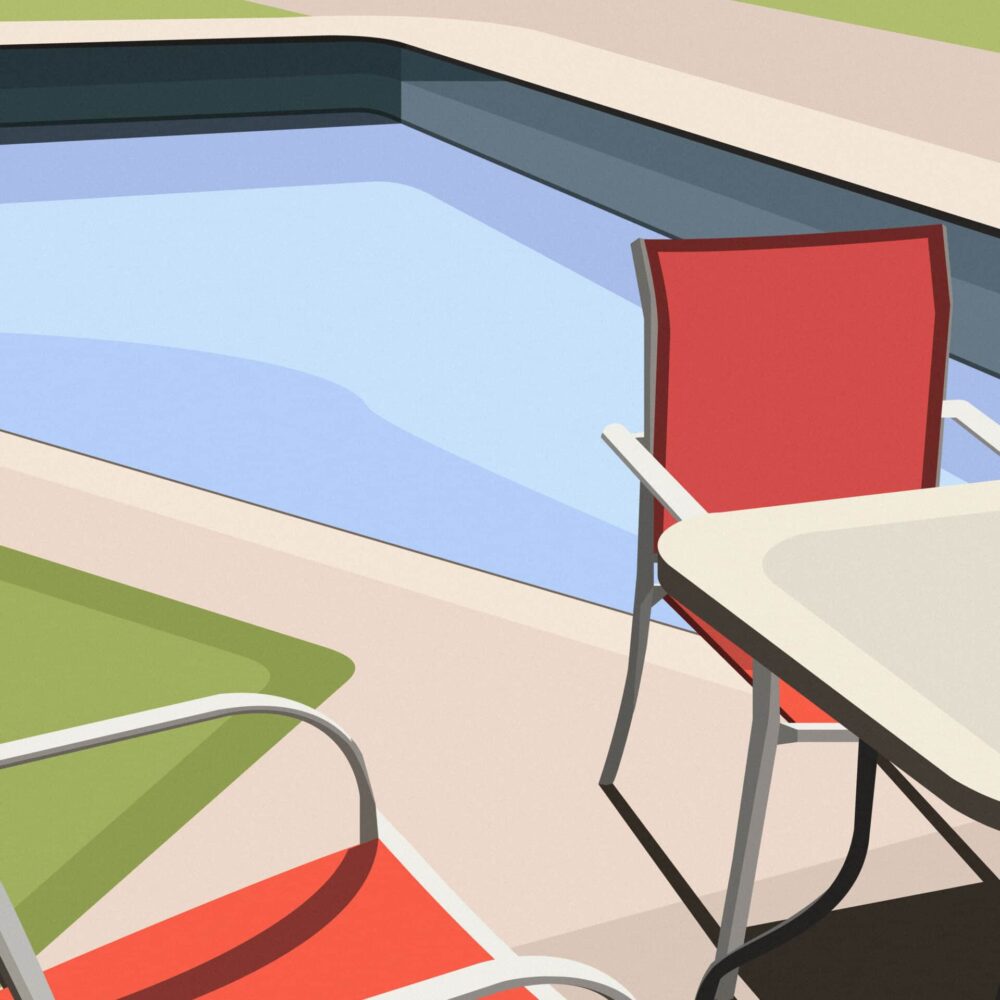
Q: How did you find your way over to creating visual art? Has that been a lifelong goal, or was that a more recent artistic endeavor?
YUN: I’ve been an artist my whole life. I remember telling my parents when I was really little that when I grew up I was going to be a photographer. I think that stuck with me for a really long time. My mom was an art teacher, she has her master’s in art. My aunt is an art teacher as well. They both kind of helped raise me, alongside my dad. I’ve just been around art my entire life. When I was just about to enter elementary school, I was really into illustrating and drawing. Sometimes I would focus on drawing random sketches more than studying in school, kind of just your typical kid with ADHD.
Q: How did you make your way into digital art specifically?
YUN: Once college came around, I really started focusing on digital art. That was when I decided to take things more seriously. I remember my first digital illustration on Adobe Illustrator. I applied for a scholarship to an on-campus gallery, and I actually happened to win that scholarship. I went to the gallery and they exhibited everyone who entered, but they showed mine kind of at the front. As I walked through the gallery, I realized I beat out basically all the art students and all the design students in my school. I was a biochemistry major who just, on the side, did art. I think that was a day that I told myself I can take this more seriously and really focus on this as a profession. Since then, I’ve been exploring my inspirations and just been pushing myself. That’s kind of my early story.
Q: You have this dual life– one in medicine, and one in art. Can you tell me about what it’s like to live in both worlds? Are they similar to each other? Are they total opposites? Are they releases from each other?
YUN: Yeah, I think on the surface level, it definitely is a release. Art is a release from medicine and sometimes medicine helps me stay focused when I get distracted and I get lost trying to illustrate and be an artist and be a creator. They definitely play off of each other. Sometimes they help decompress the other, sometimes they feed off of one another. The one thing that I think about when I consider my life as an artist and a future physician, I think I’ve always been focused on– is that I want a life of very intense existential crisis.
I've always wanted to explore the concept of living on and dying and what happens when we die. I wanted to get close to that as much as possible, which is part of the reason why I'm going to become a physician.
Q: Can you elaborate on that? Is that need for exploration what led you to your chosen careers?
YUN: I think so. I’ve always wanted to explore the concept of living on and dying and what happens when we die. I wanted to get close to that as much as possible, which is part of the reason why I’m going to become a physician. And also, I see those things in art, and I really think it’s really cool when we talk about artists who have since passed away. We see the legacy that they leave behind and the stories that they tell and how applicable it is even to us today, despite the fact that maybe they died a hundred years ago, a thousand years ago, it doesn’t really matter. It’s more so just me exploring my own kind of ‘why I exist’ here today.
Q: On the existential crises topic, I feel like many young people definitely relate to that. What are you thinking about? What occupies your brain space?
YUN: I think from the medicine standpoint– I studied religious studies as well in college. I got a degree in it. I think it’s always been interesting to see what people’s thoughts are about dying and what happens after they die. I think I really wanted to get closer to that as a healthcare worker, and see those concepts happen in real time– people contemplating these things, and going through these thoughts at the end of life. I think as an artist, there’s a lot to be said about it.
Q: Where did the art and medicine crossover begin for you?
YUN: I originally started some of my art, actually, to be put in hospitals so that they can help with patients’ mental health while they’re in the hospital. I don’t talk about it too much, because sometimes I forget about why I started making those paintings, but that was a really big part of my life. I actually have a lot of my pieces just printed and framed across Wisconsin, just in hospitals. So I’ve always wanted to explore those things just as an artist as well, and just have this holistic approach to living life, basically.
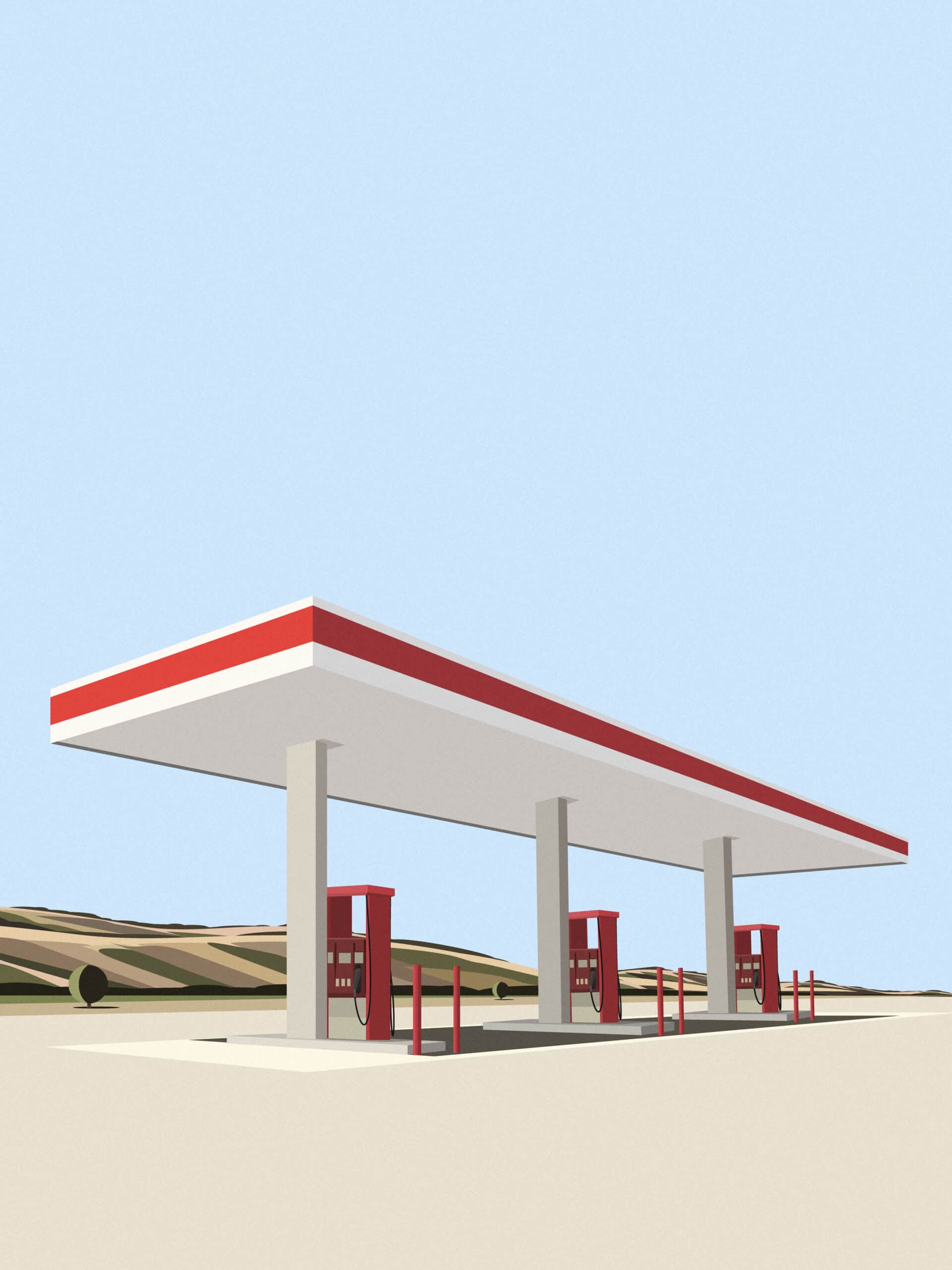
Q: One question I wanted to ask about your artwork is… So you have all these different scenes and there’s different themes to it. One is around the Midwest. There’s other themes around California and space. How do those become the subjects of your pieces?
Grant: I think they’re mostly just associated with my personal life. I spent a year living in Connecticut a couple years back, and I did my best to travel as much as possible during that year, take as many photographs as possible. I learned a lot about that side of the United States. I’m originally from California, and so when I came to the Midwest for school, it was just mind blowing to see the landscape and the architecture change. I grew up in California and I had some of my early childhood in Asia, kind of in Korea, and a little bit in Japan. All of these series I have are essentially my interpretations of where I’ve lived. There’s more like experiences, they’re not so much trying to highlight the biggest themes from each place. It’s just very everyday things that we experience. I want people to know that wherever they live is just as beautiful as wherever they wish that they could go to.
Q: That’s quite beautiful. Some pieces of art are so mesmerizing from all of the colors and the moving and the glitches and everything. Your work seems to create a sense of tranquility and peace that is mesmerizing for the opposite reason. There’s something very calming and beautiful about your work. What do people tell you when they see your pieces?
YUN: I remember when I was studying religious studies, I remember learning that in hospitals, every room has to have a window and the windows are strategically placed to bring light in, or there’s a garden outside or something of that nature.
I think I originally started wanting to have my art be as calming as possible, and also ambiguous enough where people can relate to it without me needing to say this is a specific location. That’s kind of translated through my work. I won’t name any names, but there have been a ton of collectors who buy something from me and say, “this looks identical to my childhood growing up with my parents and my father,” or “this reminds me of where I got engaged or where I got married,” or something very emotional and profound to them personally. I think it’s really humbling to know that my art is ambiguous enough where people can relate to it and have their own emotional connections. I think that’s kind of a big reason why people like my art, because it’s very relatable, apart from being minimal. But I do think that there’s a very emotional connection people have when they look at and buy my art.
Q: You’re really all over the arts world, and are very involved in the world of dance. Are you doing that professionally? Can you tell me more about your dance life?
YUN: Yeah, I started dancing in middle school, just in physical education class with some people. Did it in high school, just at school or whatever at home. Once I got college, that’s when I was like, oh, this is kind of cool. I found a community of dancers. I wanted to continue to get better, so I trained really hard.
I think it all built up for several years. And so that year that I mentioned when I moved to Connecticut, which was 2020 or 2019. That year, I made it a goal to compete as much as possible. I was out every weekend just traveling. The farthest I made it was at this event called Freestyle Session down in Orlando, and I made it to top 16. That was one of the qualifiers to make it to the Olympic breaking team. I made it to the very– I would say I was the worst of the best at that point, which is as far as I got. But I met a ton of people on the way. I think I had quite a good reputation until this whole NFT thing came around. Now I’ve just stopped competing altogether. I still practice. I still practice a lot, but I just stopped competing, because I definitely have to prioritize one art form over another.
I originally started some of my art, actually, to be put in hospitals so that they can help with patients' mental health while they're in the hospital.
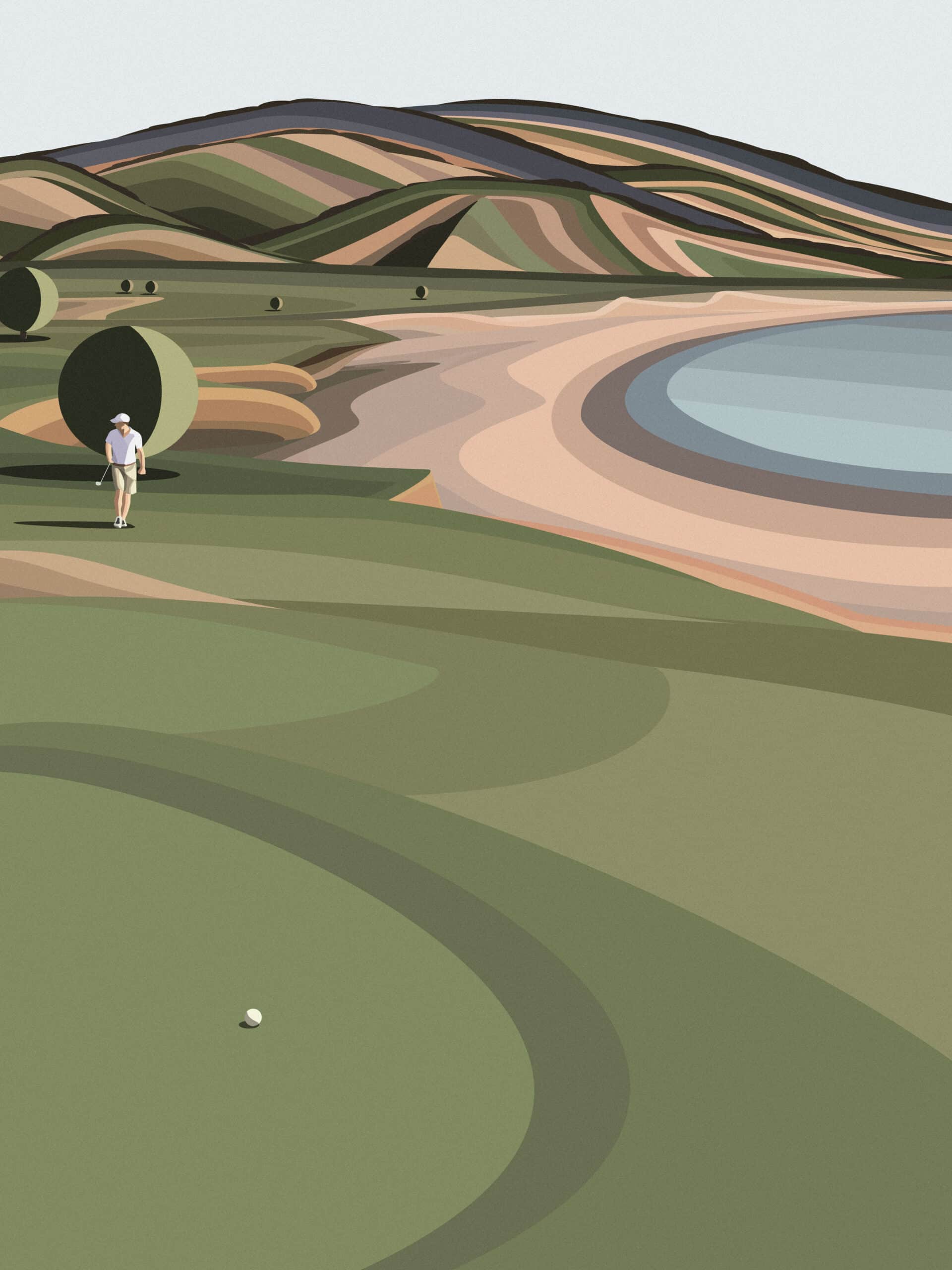
Q: What is that competitive world of dance like? Can you tell me more about that world?
YUN: That world is really tightly knit. So a very small world web, more so like Fake Rare, the Counterparty world where only several hundred people are really in it. Sometimes there are big events that are sponsored by, for example, Monster or Red Bull– or whatever big company that you have that’s willing to sponsor these huge events. There are qualifiers to these huge events. There are also the underground events, which are generally more fun, because the big events are at big stadiums. Any of the clips that you see on Twitter or just online are typically from these huge events– think Step Up or some other hip hop dance movie kind of thing. The underground events are so much more fun. It’s like in someone’s basement or it’s just in someone’s studio. Those are the people who are really in it. So for example, it’s very similar to the Fake Gallery versus going to Gateway in Miami. You’re just there for the community, really. And so, it operates very similar to just how normal, any other art related thing would operate.
Q: It really does look like you love it, would you consider it another artistic outlet for you?
YUN: Yeah, I think the whole being able to dance thing is a huge thing. Anything with music, just we as human beings are very attached to. It’s like going to a concert or a club or a rave, but you actually know what you’re doing. You actually know everyone at the event. It’s just a big hangout. And then, of course, things do get heated and stuff. But yeah, it’s within the context of just this kind of safe space. It’s just a big hangout, basically.

